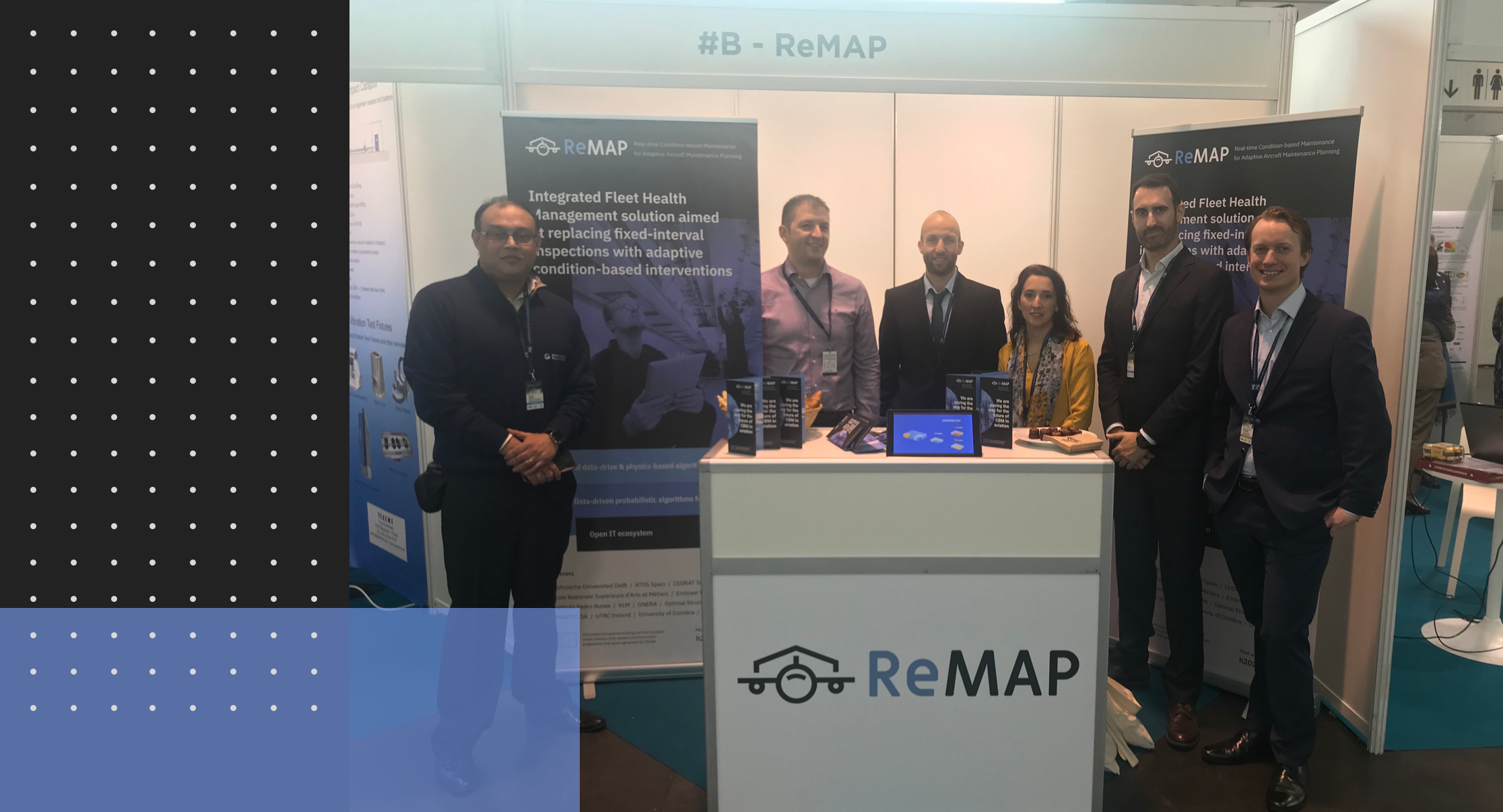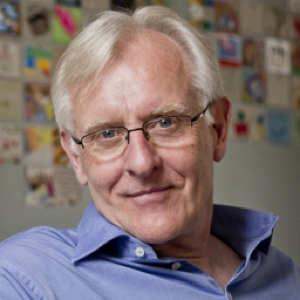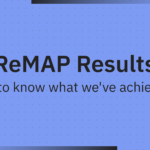Thanks for coming by at ReMAP at #AEC2020!
We welcomed dozens of stakeholders on condition based maintenance at the ReMAP-booth at the exhibition of the Aerospace Europe Conference 2020 (AEC2020) in Bordeaux. From all ReMAP partners we say thanks to you all. As a side event to the Aerospace Europe Conference Exhibition ReMAP organised a workshop on the 26th of February to inform ao airlines, MRO-companies, IT-companies and aircraftbuilders about the first results of ReMAP and discuss the issues with them. For those who could not make it at this workshop we share with you the notes.
What is ReMAP?
ReMAP is pursuing one of the main objectives defined by ACARE: the implementation of condition-based maintenance (CBM) in the aviation sector. It uses an unique end to end approach: from sensordata to an integrated fleet health management system. For the first time, the use of health diagnostics and prognostics from dissimilar aircraft systems and structures will be used to create real-time adaptive maintenance plans, following appropriate regulations. ReMAP gathers together 13 partners, from 7 European countries that covers the entire value chain for aircraft health management. ReMAP is a four year programme funded by the European Union’s Horizon 2020 Research and Innovation Programme (grant agreement no 769288).
Results so far
ReMAP coordinator Bruno F. Santos of TU Delft | Aerospace Engineering presented the preliminary results from the start of the project in June 2018 until now. He foresees that more units will be prepared for CBM procedures. The new generation of aircraft are being designed to accommodate CBM, but we will not be able to implement full maintenance based on CBM in the short-medium term. It is a challenge to demonstrate the benefits of CBM for the entire supply chain. For a logistics provider it is for instance difficult to assess that there will be less failures, let alone to include this in a contract. This impacts the development of a common roadmap towards CBM in aviation. Some remarks from the audience: It should be a broader view on the different perspectives from the whole value chain. For instance, we should involve different airlines (i.e., regional, local cost airlines, large airlines) because they have different perspectives and ambitions towards the use of CBM technologies.
Data as asset
ReMAP-workpackage leader for the IT-platform, Luis Collar of ATOS, showed the challenges he encounters in designing the open IT-platform in which data will be collected and used for prognostics and health diagnostics: “The IT platform could be used by a single airline. However, in that case, it would be better to just build the platform in the airline servers. The potential of the solution proposed does not materialize if a single airline uses it. The benefit comes when multiple airlines start using the platform.” But we are talking about several airlines, that may be competitors, sharing that data. The IT platform architecture must be designed in such a way that airlines can collaborate without violating secrets and without exposing competitive information that is embedded in that data.
Some valuable remarks from the audience:
A new perspective should be on data usage and not so much data gathering. The data from the whole fleet (from multiple operators) has to be used. Data is a business asset. Airlines understand the importance of data but want to protect it. It is not easy for an airline to share data from a fleet. There are some advances in this field – the challenge is how to technically share this data without harming the business value. A marketplace could be an interesting idea, provided that there is a group of stakeholders with common interests related with data being shared. Safety measures are the main challenge here. A good approach could be to highlight the benefits of data sharing in other fields, e.g. automotive, which is an area in which the data sharing has proven to bring benefits, namely in terms of safety. There’s a need to ‘educate’ the companies, to prove that if they share data, they can benefit from it. Probably we will need a front runner as example. If we are considering the benefits of data markets for safety reasons, we should not call it marketplaces which has a (wrong) commercial connotation. Data standardization for CBM should be a previous discussion in this topic. For example, in the automotive sector, there are already standards for CBM (https://www.asam.net/). The aviation sector should take a similar path towards standardization. An interesting approach in this field could be that instead of changing data on an advanced stage, we should start to standardise data already on the sensor stage.
Pushing sensing technologies forward
Theodoros Loutas of University of Patras responsible for ReMAP Structural Health Management, Sensing technologies and initial tests, showed how ReMAP diagnosis impact and skin/stringer disbonding damage based on multi-sensor data or digital twins. The challenges in this are how can we mature and upscale methodologies for the Remaining Useful Life of composite structures and how can we translate these results and knowledge produced in lab scale to real life scenarios.
“Do we need so many sensors and sensing points”, was asked from the audience.
Loutas:”Perhaps not. In ReMAP we are testing different sensing technologies to study which sensors can help us in the different levels of SHM. The sensing points are not necessarily correlated. It depends on the damage and its location. There is still the question on how the current lab tests can be scaled up to more complex structures.”
Structural health management (SHM)
Loutas:”Currently, when we mention data, we are only talking about systems. There is no data available on structures. We are relying on multiple techniques/sensing technologies but there’s a lack of answer from the OEMs on how to upscale these technologies. If the industry really wants to go into CBM, structures need to be sensorized. In practice, it is too costly and too far away (in the future) to implement these types of technologies/methodologies for SHM. Although structural damage can have negatives effects on the operation, the companies don’t have enough motivation to make this kind of investments. Only Delta Airlines and Embraer took a step forward in this domain with some tests with aircraft being operated. However, these were all activities that were financed externally. One solution to avoid wiring the whole aircraft structures is to combine other technologies, for instance cameras. That’s something that is being studied. It should be done by use cases. First, we need to identify one use case, and only then move forward with a whole aircraft structure. Promising structures are the ones that are hardly accessible. We need to think about the performance that we expect from sensors considering the costs for airlines.” Santos: “The reliability of the sensors has to be considered during the risk assessment conducted.”
Eco-design
Another step further is the usage of data from sensors towards an eco-design approach as in a circular economy. Santos: “We need to consider regulation issues as a first step for this. Then we need to address economic issues. Maybe it’s costlier for the airlines. Operators will want to sell their parts as late as possible for as little info as possible.”
What’s next?
There will be some deliverables of ReMAP. June 2020 there will be a first SHM dataset. November 2020 a demonstration of the IT Platform will be held. In 2021 there will be another discussion. The first half of 2022 ReMAP will be tested in a 6 month demonstration.






